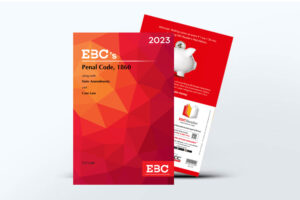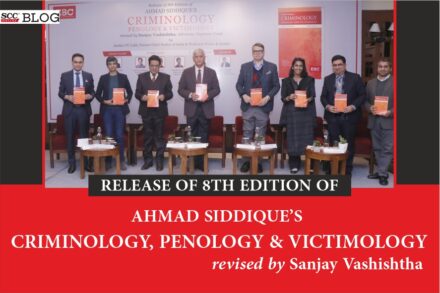Bombay High Court: While considering the appellants’ challenge to the judgment and order dated 25-4-2022 passed by the Special Judge (Exclusive Special Court) whereby the appellants were convicted for the offences punishable under Sections 3021, 3072, 3263, 120-B4, and 345 of the Penal Code, 1860 (‘IPC’) and Section 27 of the Arms Act, 1959 (‘the 1959 Act’); the Division Bench of Revati Mohite Dere and Neela Gokhale*, JJ., confirmed the conviction and sentence awarded to the appellants and held that observations of the trial Court regarding reliability of the eye witnesses testimony, the corroborative evidence, etc., were compelling and did not warrant any interference. The Court opined that injury to the witness was an inbuilt guarantee of his presence at the scene of the crime because the witness would not want to let his actual assailant go unpunished, merely to falsely implicate a third party for the commission of the offence.
Background
On 13-2-2010, the first informant, Mohd. Asif Mohd. Rafiq Khan along with Naushad Qureshi and Mohd. Irfan Qureshi were sitting outside Naushad’s shop. One of the deceased, Modak, reached the said shop and sat next to the first informant and while they were talking, a person came from the front side and fired at him with a revolver with an intention to kill him and because of which, the first informant received an injury on the left side of his chest. Thereafter, three other people came along with the first assailant and fired at Modak and Qureshi; the first informant, to save his life, went to his friend’s shop, who took him to Sir JJ Hospital. Similarly, Modak and Qureshi received bullet injuries and were also taken to Sir JJ Hospital, but they succumbed to their injuries.
Appellant 2, Pranay Rane, while in custody, gave a statement regarding the place where the weapon used in the present crime was kept and accordingly, the said weapon was recovered along with four live cartridges under the provisions of Section 27 of the Evidence Act, 1872. In the meantime, separate charges were framed against Rajendra Nikalje @ Chhota Rajan, and he was directed not to be moved out of Tihar Jail, New Delhi. Thereafter, on 12-11-2010, under the orders of Additional Chief Metropolitan Magistrate (‘ACMM’), 37th Court, Ballard Pier, Mumbai, the appellants were arrested.
The appellants were sentenced to suffer rigorous imprisonment (RI) for life with fine of Rs 8,000 each for the offences punishable under Sections 302, 34, 120-B of IPC and were sentenced to suffer RI for four months each for the offences punishable under Section 27 of the 1959 Act.
Analysis, Law, and Decision
The Court noted that the sequence narrated by eyewitness PW 1 of conducting the TIP was in consonance with the prescribed procedure and thus, this Court had no reason to disbelieve its testimony, and he had clearly identified the appellants in the TIP and before the Court.
The Court opined that the testimony of an injured eyewitness was accorded a special status in law. Thus, injury to the witness was an inbuilt guarantee of his presence at the scene of the crime and because the witness would not want to let his actual assailant go unpunished, merely to falsely implicate a third party for the commission of the offence.
The Court relied on State of U.P. v. Kishan Chand, (2004) 7 SCC 629 and opined that, Mohd. Asif Khan, being the eyewitness, gave a graphic description of the entire incident and his presence on the spot could not be doubted as he was injured in the incident. Further, his deposition must be given due weightage and could not be brushed aside merely on the ground that either he ran away from the spot as he received injuries, or the TIP was allegedly delayed.
The Court opined that the prosecution fairly succeeded in establishing the guilt of the appellants beyond reasonable doubt based on the recovery of the weapon, evidence of the medical Doctor, panchas, and the Investigating Officer. The Court opined that the conviction could be based on the testimony of a single eyewitness and there was no rule of law or evidence which said to the contrary, provided that the said witness passes the test of reliability. The Court stated that in the present case, out of the four eyewitnesses, three eyewitnesses inspire confidence.
The Court opined that the impugned judgment and order was a well-reasoned and legally sound decision and the evidence on record established the guilt of the appellants beyond reasonable doubt. The Court held that observations of the trial Court regarding reliability of the eye witnesses testimony, the corroborative evidence, etc were compelling and did not warrant any interference. The Court dismissed the appeal and confirmed the conviction and sentence awarded to the appellants.
[Mohd. Ali Jaan Mohd Shaikh v. State of Maharashtra, 2025 SCC OnLine Bom 1224, decided on 15-4-2025]
*Judgment authored by: Justice Neela Gokhale
Advocates who appeared in this case :
For the Appellant: Nitin Sejpal, with Akshata Desai, for the Appellants.
For the Respondents: P.P. Shinde, APP for Respondent 1-State; Pradip D. Gharat, Special P.P. for Respondent 2-CBI.
Buy Penal Code, 1860 HERE
1. Corresponding Section 103(1) of the Bharatiya Nyaya Sanhita, 2023 (‘BNS, 2023’)







